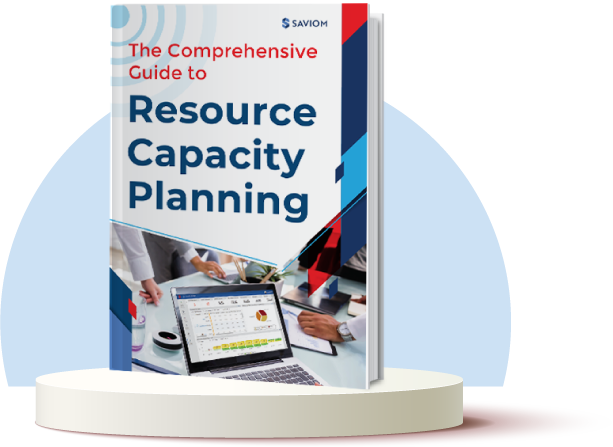“Budget is a proxy for project planning.” This adage was given by Aidan Byrne, CEO of the Australian Research Council.
Indeed, budgeting is synonymous with effective project planning. While preparing the budget, managers define the critical attributes that are the pre-requisites of project planning. It helps estimate the costs likely to incur in every phase of the project. After all, no project manager wants to find themselves in a situation where the cost of their current project is either arbitrary or out of control.
Project budgeting begins during the project planning stage. It is also known as a spending plan that forms an outline of all the project-related tasks, activities, etc., and acts as a baseline.
Effective budgeting helps accurately anticipate project expenses and allocate funds across various project tasks and resources. This enables businesses to secure their bottom line and keep their stakeholders satisfied.


But, before going into the nitty-gritty, let’s define the term project budget,
What is a project budget?
The budget for a project is the financial document that lays out the combined costs of all activities, tasks, and milestones that the project must fulfill over a defined period. In short, it’s a financial document that you need to manage and control effectively to avoid cost overrun and deliver the project successfully.
After creating a project budget during the planning stage, one must monitor it until the finish line to ensure there is no variance or take proactive corrective measures to course-correct, if any. Thus, a meticulously planned project budget is the holy grail of successful project management.
Planning project expenses is an important part of creating a project budget. To do so, you’ll need to categorize them. Let’s look into the details below;
Components of a project budget
Here’s a list of common project cost categories that help you get started:
- Direct costs: It encapsulates the salary rates of full-time and contingent workers you need to execute the project. It also includes the items your team might need to perform the work, including software, equipment, or other unique materials.
- Indirect costs: Anything that is not directly related to the finished project but must still be paid or considered in the budget, such as travel costs, lodging costs, etc., comes under indirect costs. Overhead costs like electricity, building maintenance, etc., are also covered under indirect costs.
- Procurement costs: These are the expenses incurred during the procurement of goods and services, such as purchasing costs, transportation costs, etc.
- Operational costs: Operating costs on projects include staff costs and training, along with any routine maintenance, licensing, and support fees.
- Miscellaneous cost: Studies/research, training, conferences, workshops, or data that support your project and enable you to deliver the best results come under this category.
Read More: 5 ways to Reduce Project Management Costs
With the basic idea of project cost categorization, let’s delve deeper to understand the significance of project budgeting.
Why creating an accurate project budget is important?
Suppose you have prepared a project budget and given the estimates without doing thorough research on the tasks of different phases. As a result, during project progress, you observe that you incur more costs than you initially expected, leading to budget overruns, which will later reflect in reduced profit margins.
It is evident that a poorly configured budget can impact profitability and even make a project fall apart. Therefore, creating a reasonable and accurate budget is essential. First, it’s is the engine that drives your project’s funding. The numbers will tell stakeholders exactly how much money is needed and at what stage and ultimately help them calculate potential ROI.
Second, during the execution stage, a well-planned budget serves as a baseline to compare your spending throughout the project cycle. It can also help managers proactively take corrective measures if there is variance.
Third, a project budget is a comprehensive and inclusive statement of every expense incurred during a project. It helps allocate resources appropriately to operational tasks, forms the right band mix, and enhances efficiency, improving the overall project success.


Now that the purpose of a budget is clear, let’s switch to the budget estimation techniques.
An overview of 5 project budgeting estimation techniques
We know that all projects are unique concerning their purpose, duration, and complexity. Therefore, it’s not practical to follow the same estimation approach for all of them. Here are five techniques that cater to different project types and can significantly improve the project estimation process and accuracy:
Top-down estimation
“Set an overall budget, and then split it into individual tasks “
Top-down estimation starts with the overall project budget and breaks it into smaller chunks. Businesses typically use this technique at the beginning of a project when the details are clear or examined. Over time, more detailed bottom-up estimates replace the top-down estimate.
Bottom-up estimation
“Estimate the expenses of individual phase/task and then total it”
Bottom-up estimation is one of the effective ways to create a project budget. It anticipates individual parts of the project, such as tasks, milestones, or phases, and adds them to determine the project’s total cost.
Three-point estimation
“Take the best, worst, and most likely case estimates”
One of the more accurate strategies is a three-point estimate, which includes averaging three situations: best-case scenario, worst-case scenario, and most likely scenario. That way, you’ll be able to consider things from a variety of angles and come up with a fair cost estimate.
Analogous estimation
“Predict the budget by analyzing similar prior projects”
Using analogous estimation, you’d use budget data and best practices from prior similar projects to estimate how much the present project may cost. The advantage of analogous estimating is that it can be used when there is minimal information about the project.
Parametric estimation
“Suggest a budget for a new project using the data of similar prior projects “
The parametric approach is more accurate than compared to analogous method. It takes cost variables from specific parts of the projects and applies them to the current project, so you make more decisions based on data. The advantage of this process is that it employs more than one data set and uses the statistical relationship between historical data and variables.
Since budget estimation is a continuous process, it will always undergo several iterations of refinement throughout the project’s lifespan. But the ideal method is a three-point estimation. It reduces the risk of going over budget by establishing more accurate and realistic three scenarios. Sometimes it takes longer to create a budget using this approach, but it’s worth the effort spent at the end of the day.
Read More: Effective Strategies for Resource Estimation in Project Management
5 steps to develop a reasonable project budget successfully
As mentioned previously, there are many components necessary to build a budget, including direct and indirect costs, fixed and variable costs, materials, equipment, etc. To meet all the financial needs, a project budget must be created diligently, keeping every aspect in mind.
Essentially, these five steps can help you put the finances together and create a project budget summary:
Use previous project history & lesson learned reports
Examining previous projects and their budgets is a great way to get a head start on your new project budget. You might also check lesson-learned reports to learn from their successes and mistakes.
It lays a clear path that leads to more accurate estimations. You may even look at how they responded to changes and kept their budget in check.
Define project scope
A project manager should be very clear about client expectations and the project’s final goal before forming a project plan. Once you are clear on the scope, you must start defining the timelines, deliverables, etc.
For example, the scope of a construction project is to build a metro station. Accordingly, you’ll require human resources such as workers, architects, supervisors, and non-human resources like equipment, machinery, etc. Thus, after understanding the end goal, you can define the scope, deliverables, timelines, etc., to get a head start.
Read More: How to Create An Effective Project Plan in 9 Simple Steps?
Create a high-level work description to estimate costs & resources
What is the best way to assign a cost to each task?
This is the first question that comes to your mind while forming a budget. Well, an ideal way is to develop a work breakdown structure (WBS) of the project. This detailed task description allows project managers to estimate the cost for each project phase.
Once you form the WBS, you can assign resources to each task, estimate their numbers and cost. From there, it becomes much easier to estimate cost requirements to complete a project.
Keep your budget dynamic with a contingency fund
According to many project management experts, keeping a budget of 8-10% extra is beneficial to manage budget slippages.
Of course, you can’t be 100% confident about the final estimate; changes in the project may necessitate budget revisions. Thus, adding contingency funds ensures that the project doesn’t go over budget and that your estimate number is closer to the final costs.
Furthermore, if you complete the project with minimal stretch into the contingency reserve, the project benefits by coming in under budget and helps you build a good reputation.
Use inputs from experts
Another vital step while building a project budget is to enlist the help of persons with relevant expertise and knowledge, whether they be subject matter experts, other project managers, or experts in the field. Additionally, reaching out to others who have worked on comparable projects and created budgets will assist you in staying on track and avoiding unnecessary pitfalls.
Lastly, present your budget & narratives for approval to stakeholders. When you submit your project budget to the concerned authorities, be prepared to justify the items and amounts. This is when you’ll want to highlight key assumptions and different rationales of the budgeting model. Once the budget is approved, it’s the project manager’s responsibility to oversee it.
Read More: Who are Project Stakeholders and How to Manage Them Efficiently?
Now that you know different steps to create an effective project budget, given below is a real-life example of budgeting for better understanding.
Project budget example
To further illustrate how a project budget is created, let’s assume you’re a project manager in charge of completing ABC’s construction project.
The first thing you’ll need is to break the project into tasks, subtasks, and milestones. Then, with the tasks broken down for the project, you may need to develop a high-level estimate of the resources. A construction project requires diverse expertise, from on-site workers and engineers to highly skilled architects and supervisors. Then you must account for heavy equipment (bulldozers, excavators, cranes, etc.), materials (wood, metals, bricks, cement, etc.)
Other cost includes travel expenses and renting space to house the team. You’ll also have to consider any uncertain miscellaneous costs, such as training or workshops that are more likely to occur during the project progression. The construction project is unique due to its vulnerable climatic and environmental dependencies. Therefore, managers should also plan and keep a buffer budget in place.
Below mentioned is the project budgeting sample template


Thus, managers must make a diligent effort to include all the above items’ costs and calculate approximate total revenue. In addition, monitoring and tracking the expenditure with planned vs. actuals at every phase helps you avoid unmanageable overruns.
Conclusion
Building an accurate budget is key to steering your project to success. Therefore, it is imperative to give time and attention to all the entities when developing a budget.
The above-mentioned practices will help you consider every factor that plays a role in project budgeting and create an accurate estimate for your project needs. Thus, with the right numbers in place, you will be able to secure the buy-in easily & lead the project successfully.
How do you manage the project budget in your organization?
The Glossary
Read More: Glossary of Resource Workforce Planning, Scheduling and Management
The SAVIOM Solution
SAVIOM is the market leader in offering the most powerful and configurable solutions for managing enterprise resources efficiently and effectively. Having more than 20 years of experience, this Australian-based MNC has a global presence in over 50 countries. It is also popular with more than 100 customers and helps them achieve their business goals. SAVIOM also has products for project portfolio management, professional service automation, and workforce planning software which can be easily customized as per business requirements.








